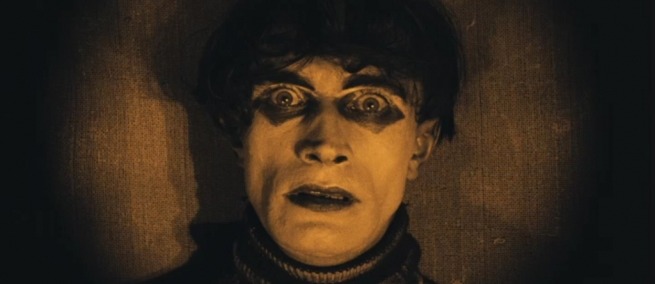
In Robert Wiene’s 1920 German Expressionist masterpiece THE CABINET OF DR. CALIGARI, a hypnotist brings a somnambulist (sleepwalker) under his control and commands him to commit murders. Is it possible to control someone who is sleepwalking? On May 21 at the Museum of the Moving Image, parasomnia specialist Dr. Carl Bazil joined Executive Editor Sonia Epstein following a screening of THE CABINET OF DR. CALIGARI. A live improvised score, performed by High Water on saxophone and synth, accompanied the projection of a restored version of the film with color tinting. The speaker, Dr. Bazil, is director of the Epilepsy and Sleep Division of the Department of Neurology at Columbia University where he sees patients.
The program, “Somnambulism: When Dreams Come True,” was presented as part of the Museum’s Science on Screen® series. Science on Screen is an initiative of the Coolidge Corner Theatre Foundation supported by the Alfred P. Sloan Foundation; fifty-seven non-profit cinemas from across the country have also received Science on Screen grants to pair scientists with films.
The series at Museum of the Moving Image began in January with a screening of Lynn Hershman Leeson’s 2002 cult film TEKNOLUST, starring Tilda Swinton as a biogeneticist and her three replicants. The screening was followed by a discussion about gene editing and reproduction with the Leeson and Columbia University’s Chair of Biological Sciences–Stuart Firestein. The next program, the “Love Lives of Sea Creatures,” featured nine short films by, respectively, Isabella Rossellini, Roberto Rossellini, and Jean Painlevé. Following the screening program was a discussion about sea creatures’ mating behavior with Isabella Rossellini and marine chemical biologist Dr. Mandë Holford.
The series is organized by Executive Editor Sonia Epstein. To stay up to date on Science on Screen events, subscribe to Science & Film’s monthly newsletter.
PARTNERS
TOPICS